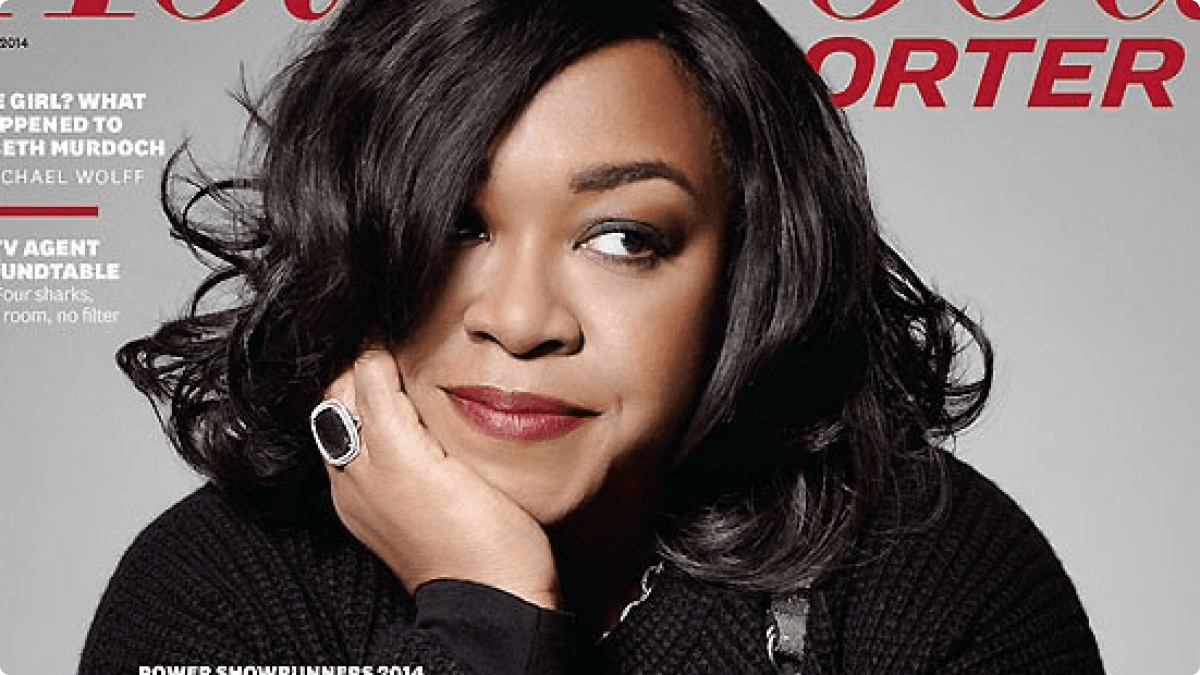Deadline Hollywood‘s Nellie Andreeva wrote a post yesterday called “TV Pilots 2015: The Year of Ethnic Castings – About Time Or Too Much of a Good Thing?” and Scandal and How to Get Away With Murder creator Shonda Rhimes was not having it. She took to Twitter to express herself, as she is wont to do.
1st Reaction:: HELL NO. Lemme take off my earrings, somebody hold my purse! 2nd Reaction: Article is so ignorant I can’t even be bothered.
— shonda rhimes (@shondarhimes) March 25, 2015
She soon started retweeting other folks on Twitter who seemed equally upset by the article, including other TV writers at other media outlets:
Horrible Deadline article, you’ve left me no choice. I must go FULL FACEPALM, from ALL of Star Trek! Happy now??! pic.twitter.com/HC3FEY5CTW — Mo Ryan (@moryan) March 25, 2015
Hey look the grossest possible reaction to a breakthrough TV year: http://t.co/uwWvnQF8Jb
— emilynussbaum (@emilynussbaum) March 25, 2015
What troubles me is the decision-makers in Hollywood who will read that @Deadline tripe about black actors in television and say, “Exactly.” — Jamil Smith (@JamilSmith) March 25, 2015
And my personal favorite:
.@Deadline You are literally creating the problem when you label TV a white person’s medium and suggest non-whites are a trend.
— Matt Wallace (@MattFnWallace) March 25, 2015
The original Deadline piece is wrong-headed on so many levels. For example, Andreeva criticizes the fact that there have been a couple of instances where, while the real-life inspiration for characters were all white, they were cast in a more ethnically diverse way for television. Like this:
ABC’s medical drama pilot The Advocate was based on the story of former CAA agent Byrdie Lifson-Pompan and Dr. Valerie Ulene, who launched a healthcare consulting company. While the real-life inspiration for the two central character are both Caucasian, the show cast them with one white actress, Kim Raver, and one black, Joy Bryant.
As the photo of the 1972 graduation of the first 12-women class of the Boston Police Academy indicates, they appear to be all white, as were the members of the original Broad Squad, Rachel Keefe and Patricia Murphy, Boston’s first all-female patrol team. That is no surprise as non-Hispanic Whites constituted 80% of Boston’s population in 1970 versus 16% blacks. While set in the 1970s, ABC’s drama pilot Broad Squad, inspired by the real-life events, has a lead cast more consistent with Boston’s current racial makeup of 45% white non-Hispanic and 27% black as one of its four female leads was written and cast as African-American, Wesley.
I wonder if Andreeva’s made the same stink when stories that actually are about people of color have been whitewashed? Because that happens ALL THE TIME. But we’re all supposed to be color-blind, right? As long as “color-blind” defaults to white. That’s the problem with “color-blind” thinking. If you’re trying to not see color at all… you usually don’t, and it’s that much easier for a white person to cast another white person. The answer isn’t “color-blind” casting. The answer is making it a point to see color and put it on the screen in a way that is accurate and representative of the real world.
Lest there are some readers out there who wonder if Andreeva and the agents quoted in her piece are onto something with her “too much of a good thing” angle, allow me to put her information in a little perspective. She says this:
While they are among the most voracious and loyal TV viewers, African-Americans still represent only 13% of the U.S. population. They were grossly underserved, but now, with shows as Empire, Black-ish, Scandal and HTGAWM on broadcast, Tyler Perry’s fare on OWN and Mara Brock Akil’s series on BET, they have scripted choices, so the growth in that fraction of the TV audience might have reached its peak.
Now, according to the 2014 Hollywood Diversity Report, the first in a series of studies done by the Bunche Center for African American Studies at UCLA which focused on 1,061 television shows from the 2011-2012 season, minorities have 14.7% of the leads on cable television. Notice I didn’t say black people—I said “minorities.” Meaning that this 14.7% figure includes blacks, Asians, Latin@s, etc. So, on the whole, minorities are underrepresented 2 to 1 on cable. It’s worse on broadcast television. Minorities make up 5.1% of the leads on broadcast television, making them underrepresented 7 to 1. They have the highest representation on reality television, sadly, at 24.5%, and that’s often in an exploitative way (see Real Housewives of Atlanta, or My Big Fat Gypsy Wedding).
The point is, the current state of diversity on television might seem like “a lot” or even “too much” to someone who’s used to being catered to. It is not, however, an actual problem. In fact, it is only the beginning of what needs to happen in order for television to actually be representative of its audience.
(via The Wrap)
Are you following The Mary Sue on Twitter, Facebook, Tumblr, Pinterest, & Google +?









Published: Mar 25, 2015 01:45 pm